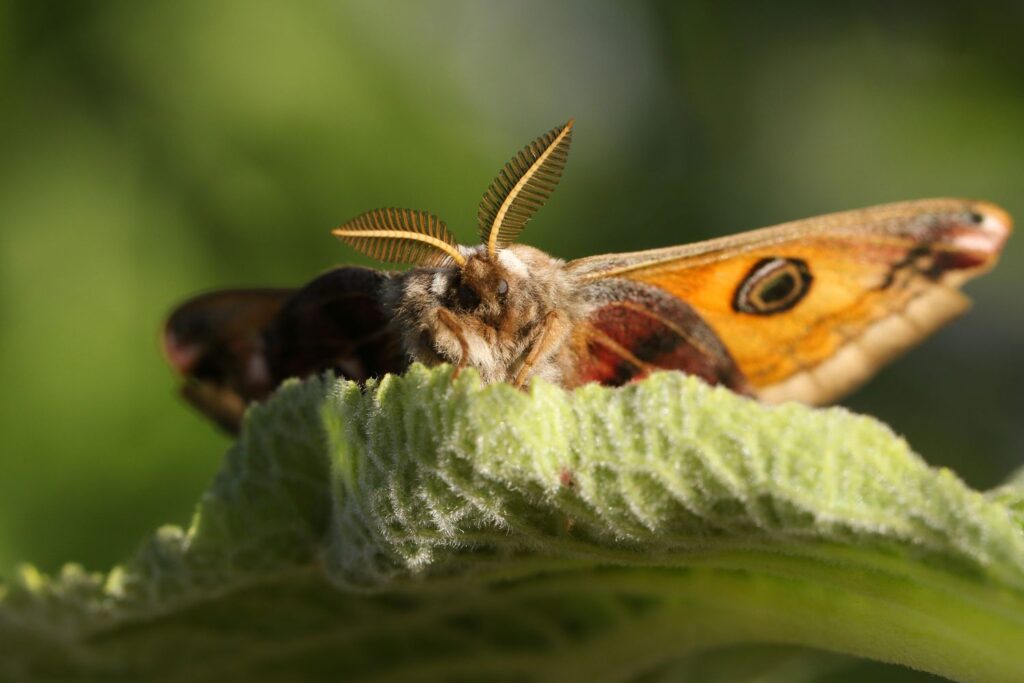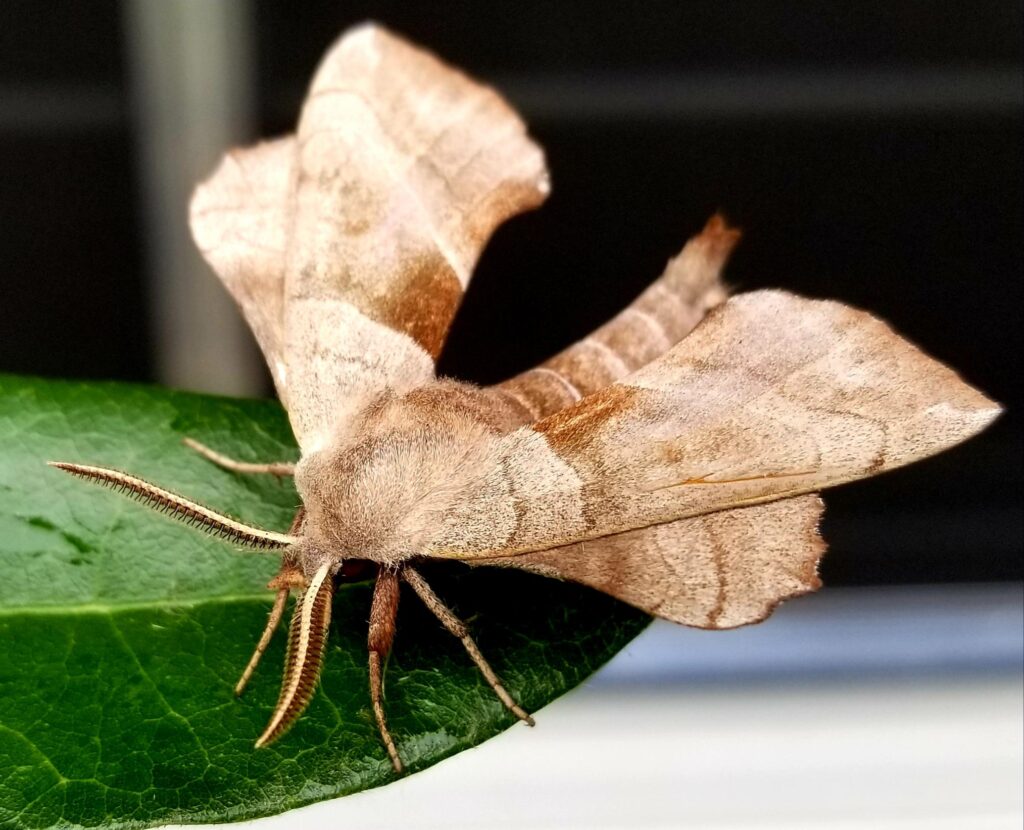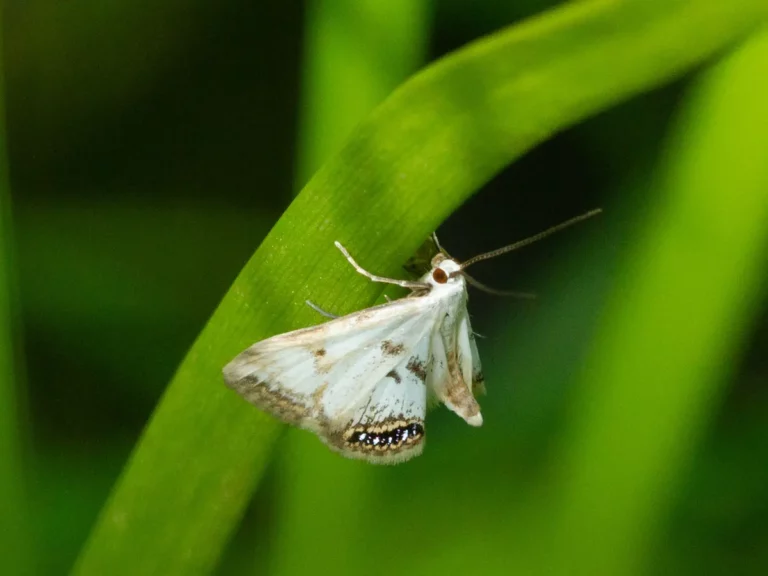Killing moths should be avoided due to their ecological importance as pollinators and prey, their diverse contribution to biodiversity, and their beneficial roles, such as pest control.
Most moths are harmless to humans, and ethical considerations, cultural symbolism, and alternative solutions highlight the importance of preserving their lives in the natural world.
Unnecessarily killing moths disrupts ecosystems and goes against principles of non-violence towards animals.
How do moths contribute to biodiversity?
Understanding and preserving their ecological significance is essential for maintaining the health and balance of natural ecosystems.
Pollination Role in Ecosystems
- Nighttime Pollinators: While bees and butterflies are more well-known as pollinators, moths play a crucial role, particularly in pollinating night-blooming plants.
Many plants, including some of economic importance like certain fruit trees and crops, rely on moths for pollination during the nighttime.
- Specialized Adaptations: Moths have co-evolved with night-blooming flowers, developing specialized adaptations to facilitate pollination in low-light conditions.
Some moths have long proboscises to access nectar deep within flowers, ensuring successful pollination.
- Biodiversity Maintenance: By aiding in the reproduction of various plant species, moths contribute to the overall biodiversity of ecosystems, helping to maintain a balance among different plant and animal species.
Contribution to Biodiversity

Moths are incredibly diverse, with over 160,000 known species worldwide. Each species has its unique ecological niche and interactions with other organisms in the ecosystem.
Certain moth species are used as indicators of environmental health. Their presence or absence can provide insights into the condition of an ecosystem. Declines in moth populations can signal broader ecological issues.
Status as a Food Source for Predators
Moths serve as a critical link in food chains and webs. They are a primary food source for various nocturnal predators, including birds, bats, and some mammals. For example, many bat species rely heavily on moths as a primary food source.
Predation on moths helps control their populations, preventing outbreaks that could damage plant life or disrupt other ecological processes. It also aids in regulating predator populations.
Moths, by being consumed by predators, transfer energy and nutrients from plants to higher trophic levels, ultimately sustaining a healthy and balanced ecosystem.
How do silkworm moths benefit society?
Silkworm moths have historical, cultural, and economic significance, while certain moth species play a crucial role in natural pest control by preying on other insect pests.
Harnessing the benefits of moths, both in silk production and pest management, demonstrates their positive impact on various aspects of human life and ecosystem health.
Specific Species’ Importance (e.g., Silkworm Moths)
Silkworm Moths (Bombyx mori):
Silkworm moths are perhaps the most well-known moth species due to their economic significance. They are the primary source of silk production. The silkworm caterpillars spin silk cocoons, which are harvested and used to create various textiles and products.
The domestication of silkworms dates back thousands of years and has played a pivotal role in the development of cultures and economies in regions where they are cultivated, such as China and India.
The silk industry generates employment opportunities and income for many people in the silk-producing regions, contributing to the local economy.
Natural Pest Control Methods Involving Moths
- Some moth species, particularly their larvae (caterpillars), are natural predators of other insect pests.
- Some moths, like the cabbage moth, have parasitoid wasps (e.g., Trichogramma) as their natural enemies. These wasps lay their eggs on moth eggs, controlling their populations.
- Certain moth caterpillars, like those of the bramble moth, feed on aphids and other insect pests that damage plants.
- These moths can be used in biological pest control programs to reduce the need for chemical pesticides, which can harm the environment and non-target species.
- By preying on pest insects, these moth species help maintain ecological balance in agricultural and natural settings, preventing outbreaks of harmful insect populations.
How do moths pose no threat to human health?
Moths are harmless to humans in multiple ways. They do not pose a threat to human health as they neither bite nor sting.
Additionally, their non-aggressive behavior and lack of interest in colonizing human spaces make them generally benign insects.
Lack of Threat to Human Health
Moths do not possess mouthparts adapted for biting or feeding on humans. Unlike mosquitoes or some flies, moths do not seek to feed on human blood or flesh. This absence of biting behavior eliminates the risk of transmitting diseases to humans.
Moreover, moths also lack stingers, like bees or wasps. They do not have venomous or defensive mechanisms designed to inflict harm on humans. In contrast, some other flying insects, like bees and wasps, can sting when they feel threatened or provoked.
Absence of Aggressive Behavior (Non-Biting/Stinging Nature)
Moths are generally passive and harmless insects. They do not display aggressive behavior toward humans. Their primary focus is finding food sources, reproducing, and, in the case of some species, pollinating plants.
Unlike some other insects, moths do not nest in or colonize human structures. They do not build hives, nests, or colonies in homes or gardens, reducing the likelihood of human-moth conflicts.
Most interactions between humans and moths are accidental, occurring when moths are attracted to lights at night or seek shelter during the day. In such cases, moths are simply looking for a place to rest or feed and are not intentionally causing harm.
What is the cultural significance of moths?

Ethical considerations regarding moths emphasize the principles of non-violence towards animals, respecting their intrinsic value and right to exist without unnecessary harm.
Additionally, recognizing the cultural significance and symbolism associated with moths highlights the importance of respecting diverse beliefs and values.
Principles of Non-Violence Towards Animals
- Animal Welfare Ethics: Ethical principles regarding the treatment of animals emphasize minimizing harm and suffering to sentient beings.
Moths, like all living creatures, have intrinsic value and a right to exist without unnecessary harm.
- Respect for Life: Advocates for animal welfare argue that humans should respect and protect all forms of life, including insects like moths, and avoid causing harm or death unless it is necessary for human well-being.
- Ecological Awareness: Understanding the interconnectedness of ecosystems and the importance of each species in maintaining balance reinforces the ethical duty to protect and preserve moths as part of the broader natural world.
Cultural Significance and Symbolism
Moths hold diverse cultural significance around the world. In some cultures, they are associated with positive symbolism, representing transformation, renewal, or the afterlife. In others, they may be considered omens or symbols of change.
Ethical considerations also extend to respecting the beliefs and values of different cultures. Disregarding the cultural significance of moths and killing them can be seen as disrespectful and offensive to those who hold these beliefs.
Recognizing and understanding the cultural significance of moths can also serve an educational purpose, fostering awareness and appreciation for cultural diversity and traditions.
FAQ’s
Is it a sin to kill a moth?
Killing a moth is generally not considered a sin in most religious or ethical contexts. However, some cultures or religions may have specific beliefs regarding the sanctity of all life, including insects.
Is it bad luck to have a moth in your house?
Moths in your house are not typically associated with bad luck in most cultures. It’s usually seen as a common occurrence related to their attraction to light sources.
Is it OK to sleep with a moth in your room?
Yes, it’s generally safe to sleep with a moth in your room. Moths are harmless to humans and pose no threat during sleep.
How do you kill moths?
If necessary, you can catch and release moths outside rather than killing them. Alternatively, you can use non-lethal methods like moth repellents or traps to manage them.
What do moths represent in Islam?
In Islam, moths are not commonly associated with specific religious symbolism. Their significance may vary among different cultural interpretations.
Are moths lucky or unlucky?
The perception of moths as lucky or unlucky varies among cultures. In some, they symbolize transformation and renewal, while in others, they may be seen as omens or have different symbolic meanings.
Final Words
In conclusion, moths are essential creatures in our natural world. They help plants reproduce by pollinating, ensuring the beauty and diversity of our environment. Some, like silkworm moths, even benefit our economy by providing silk.
Importantly, moths don’t harm humans; they don’t bite or sting. Being mindful of their cultural significance and the principles of non-violence towards animals, it’s crucial to coexist with these gentle insects.
Preserving moths means preserving the balance of our ecosystems and respecting the rich tapestry of cultures worldwide.
Embracing this understanding leads to a harmonious relationship between humans and the natural world, where every creature, no matter how small, has a valuable role to play.

